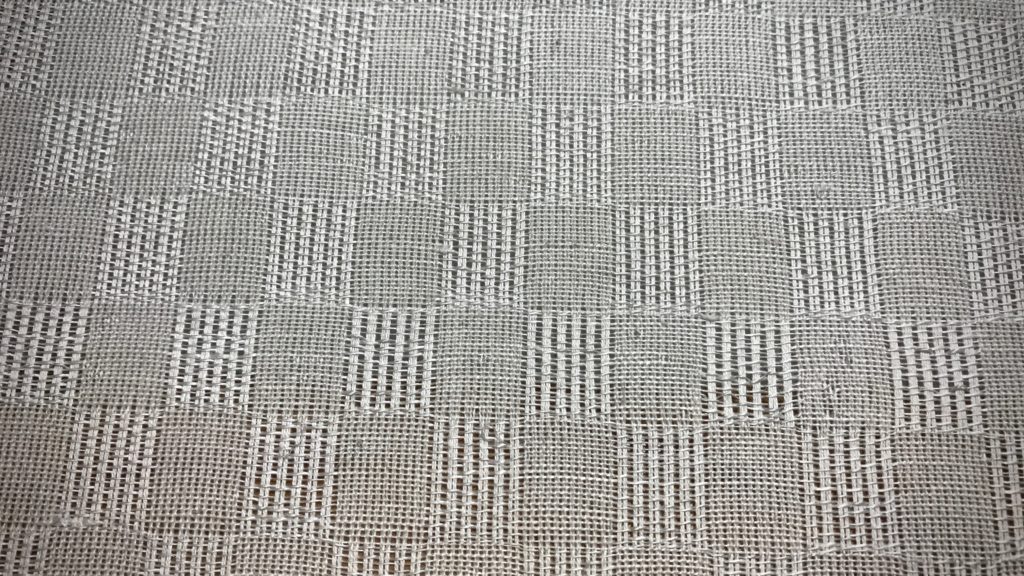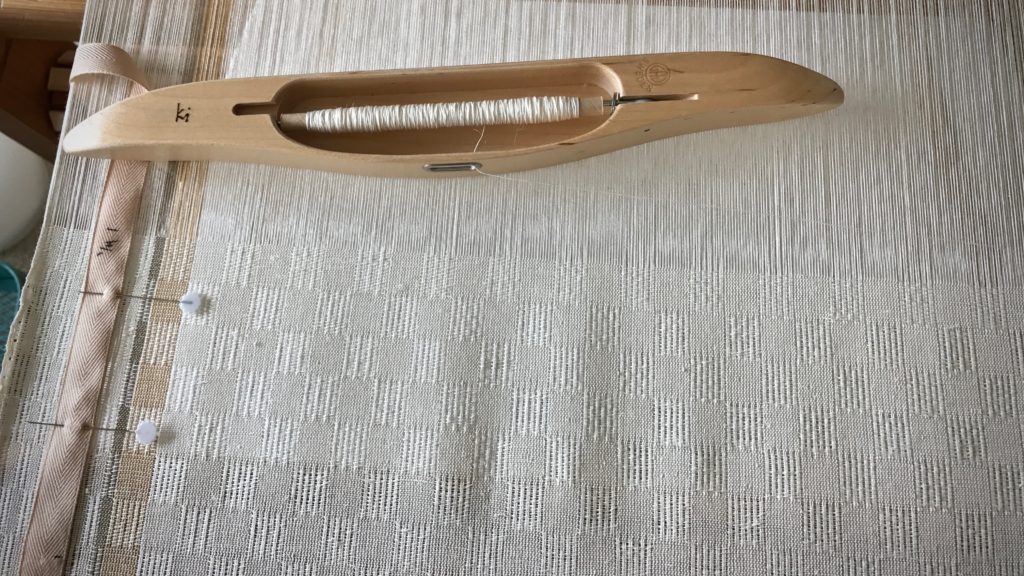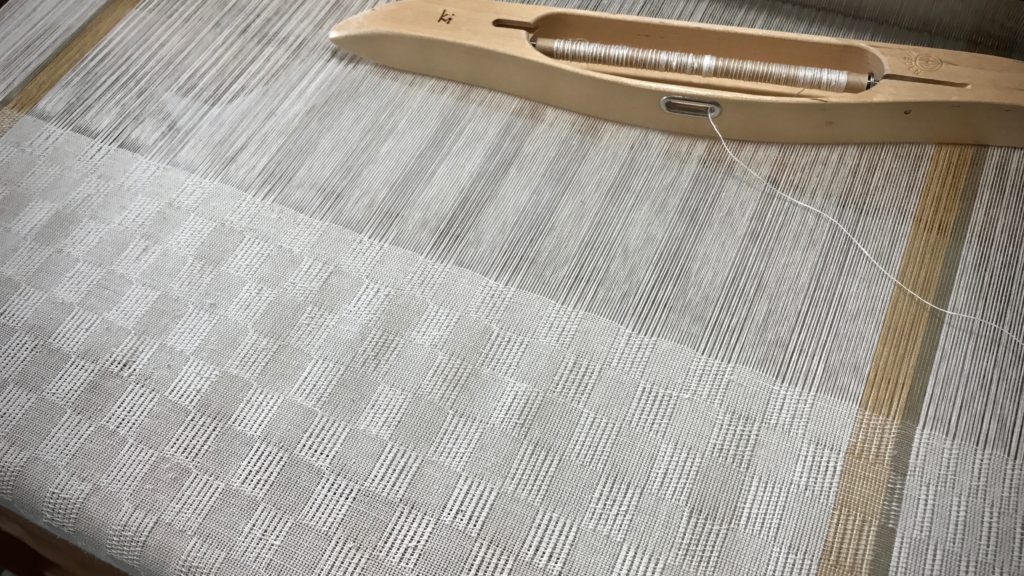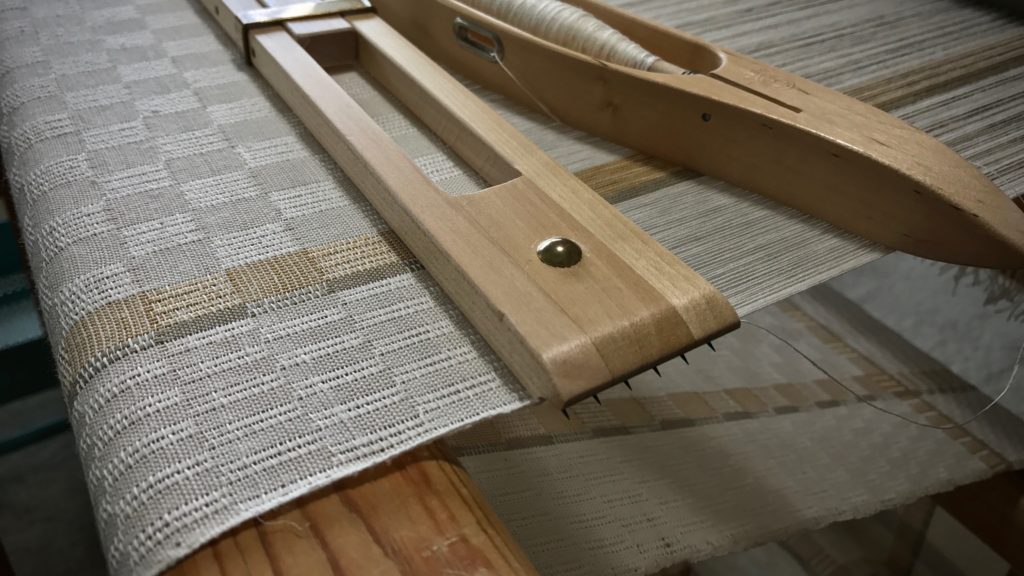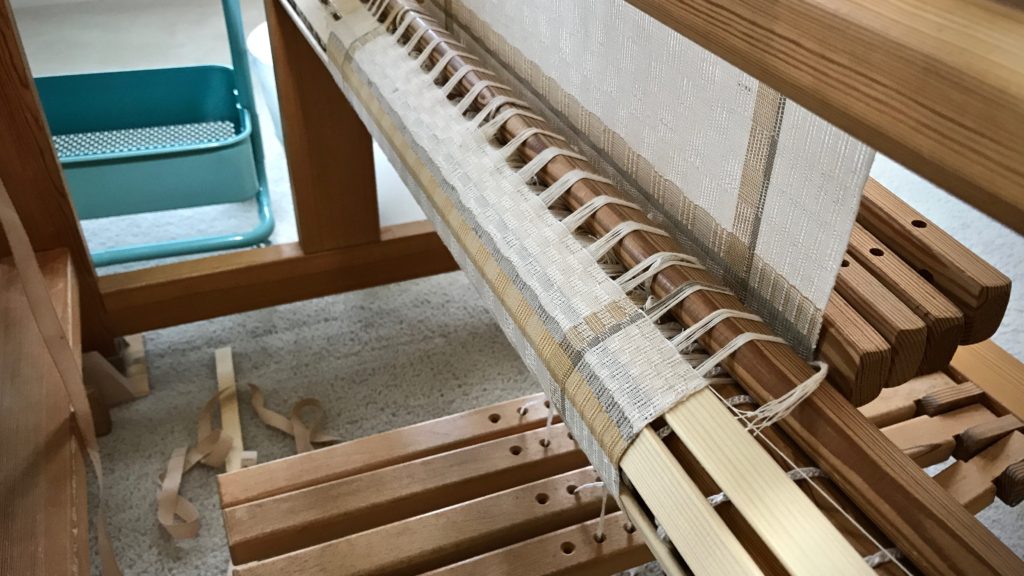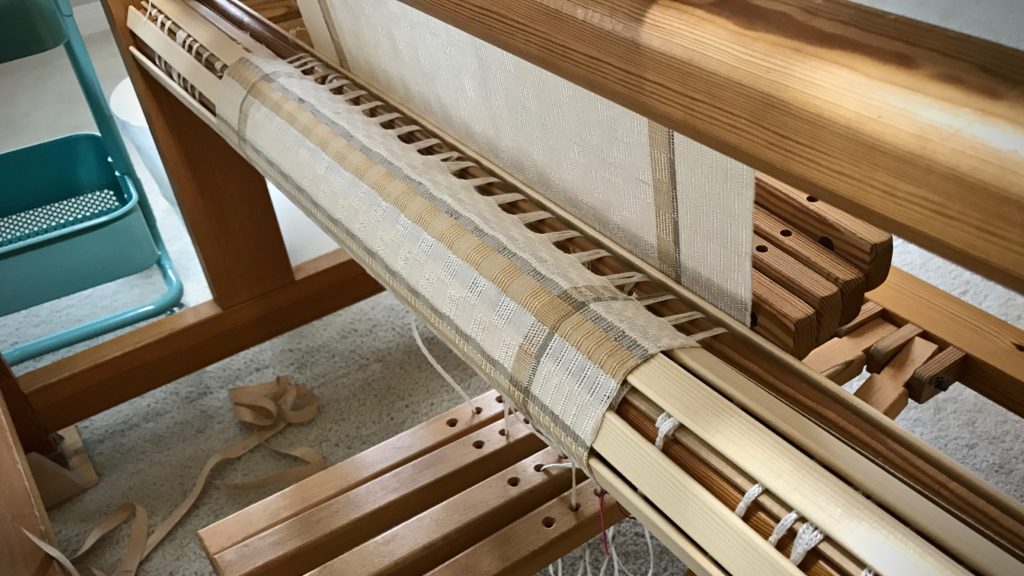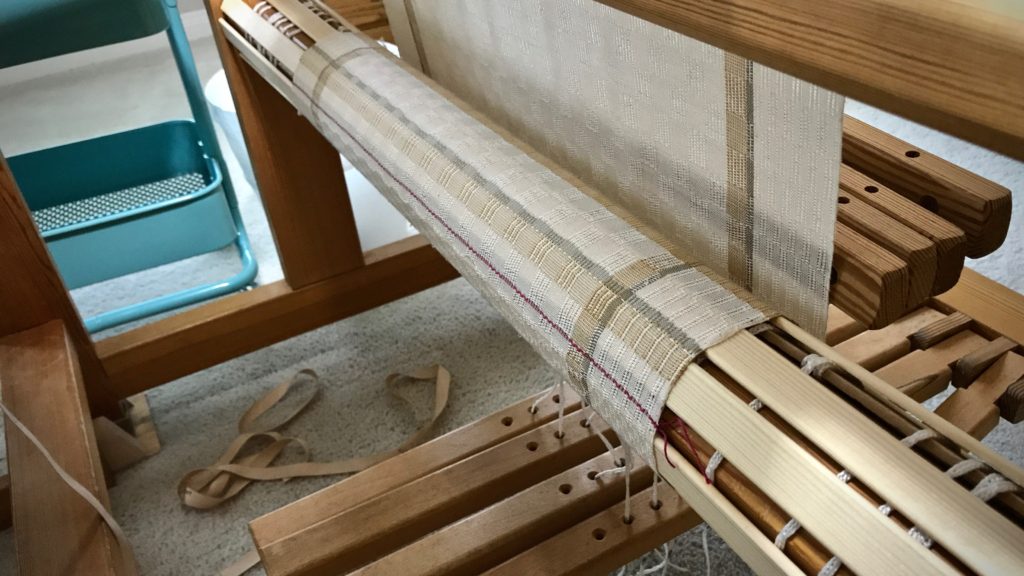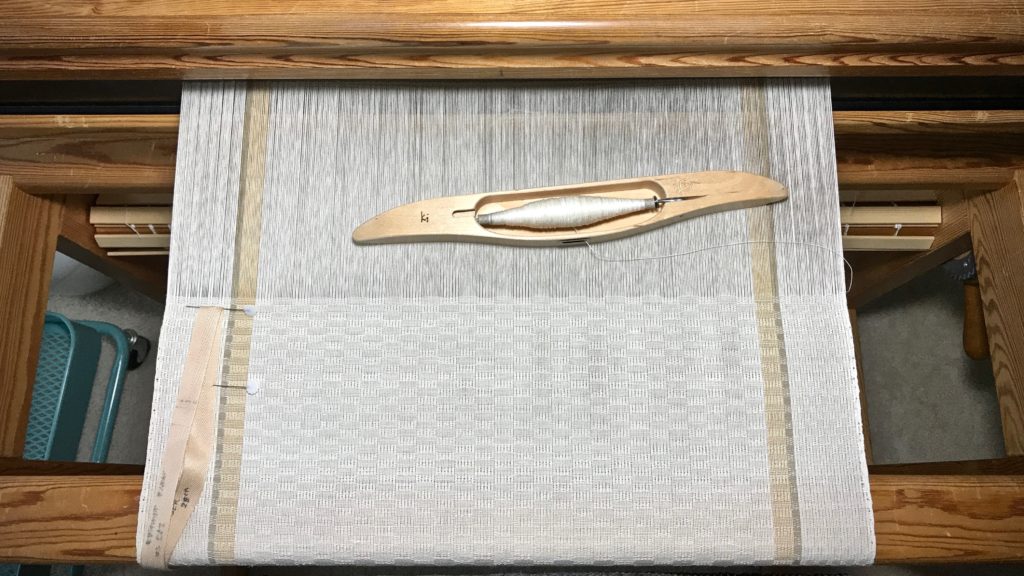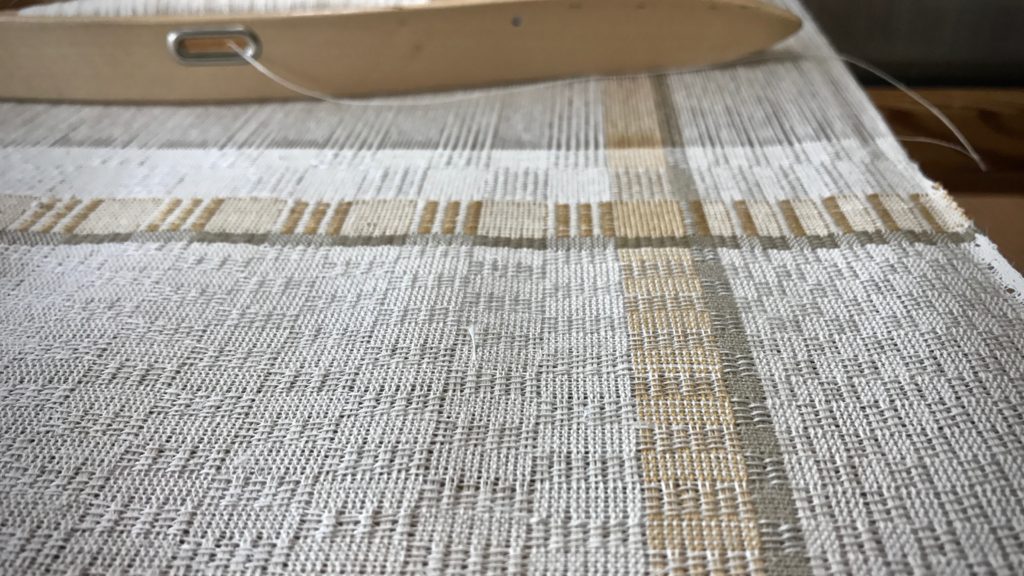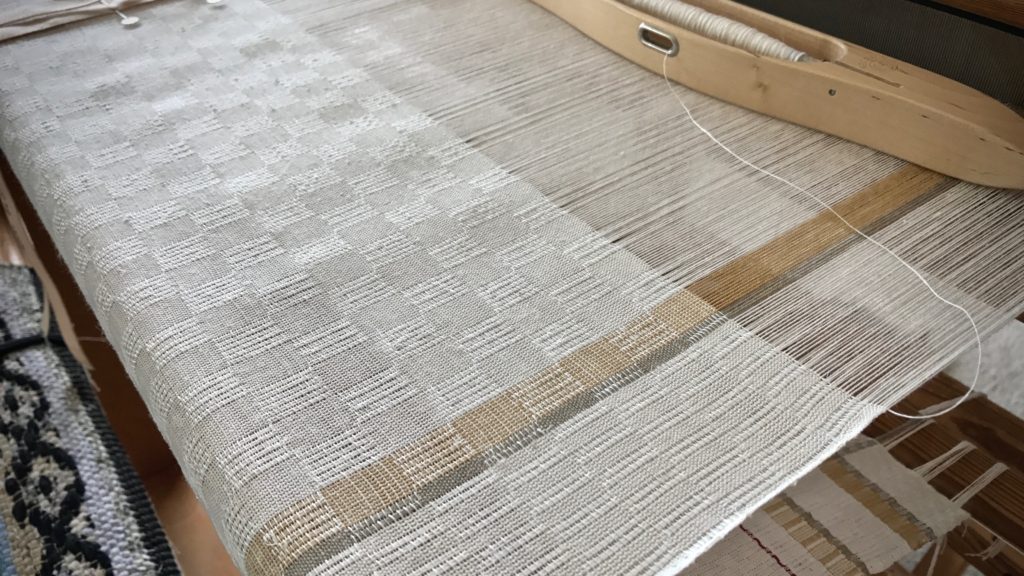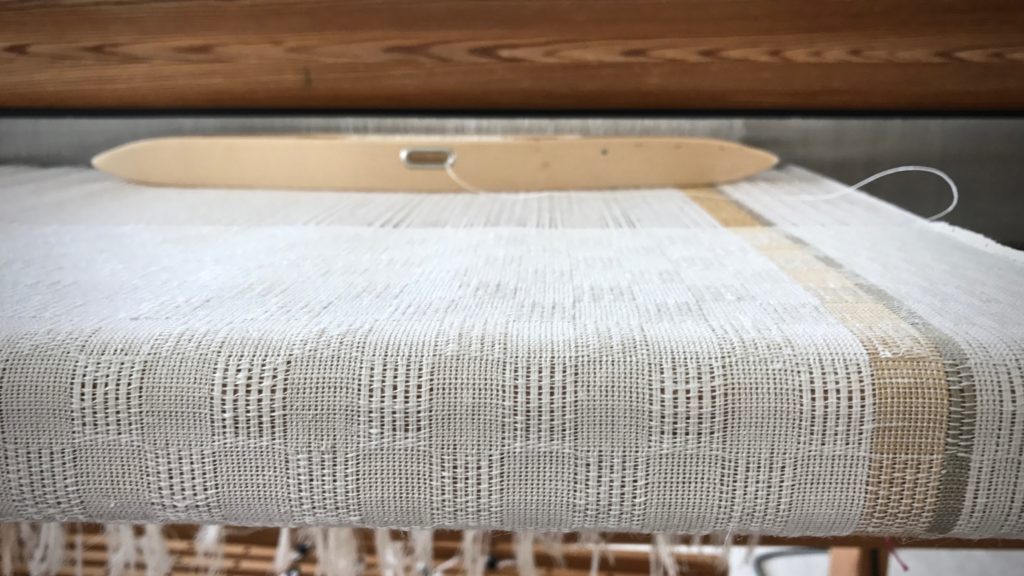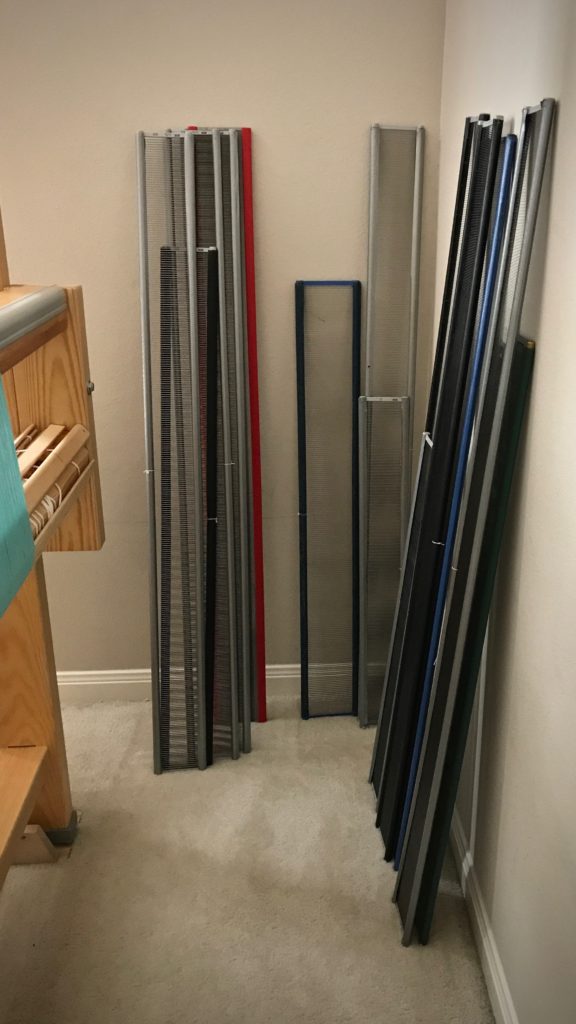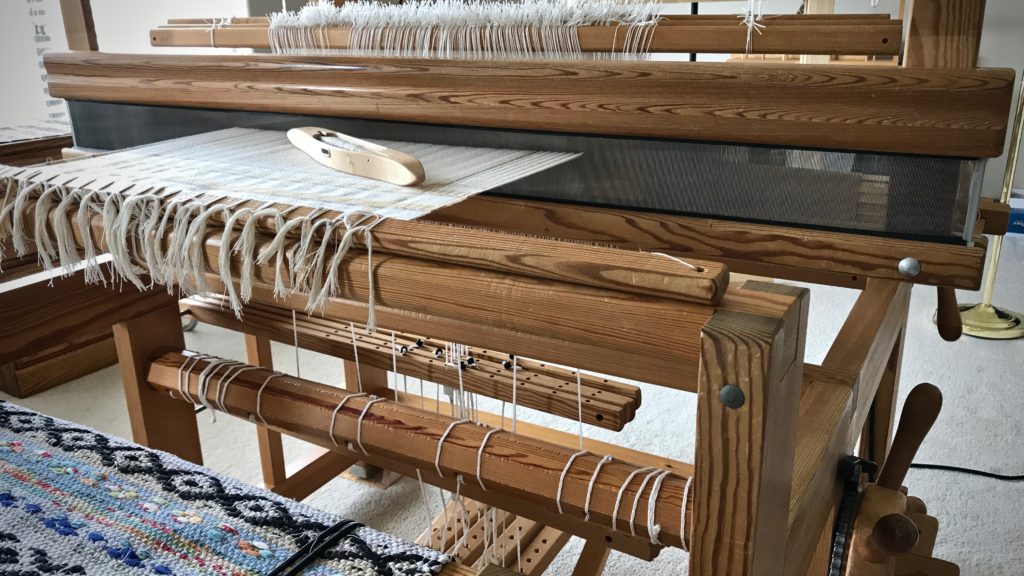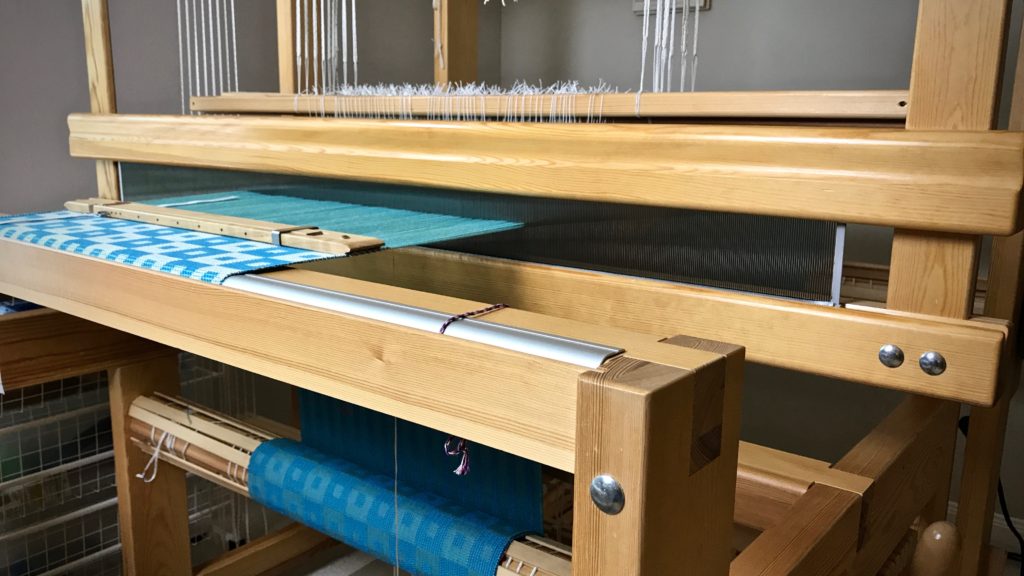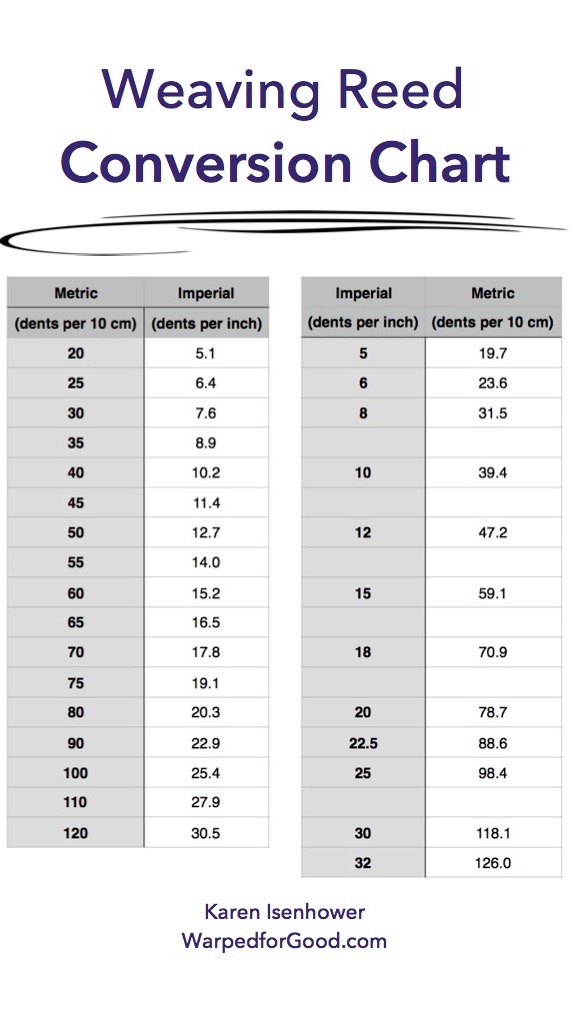This is my attempt to add a fascinating detail. I alternated white and brass-colored ends in the warp stripe. In a similar fashion, I alternated colors in the weft stripe, too. It’s an experiment. The short columns that emerge in the weft stripe are a result of this thread arrangement. The outcome looks promising. Wet finishing will reveal the final effects of this low-risk exploration.
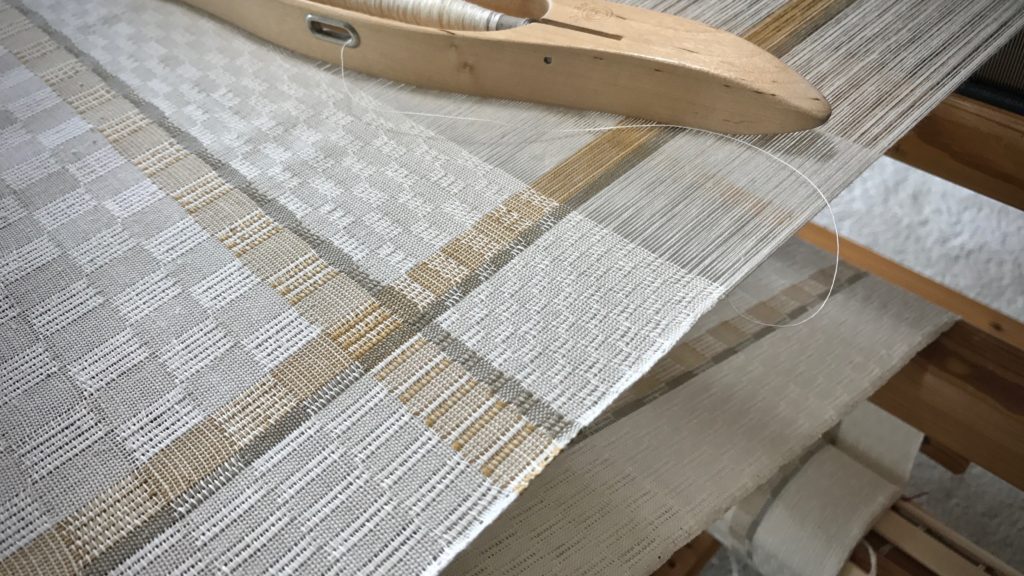
I like to do experiments on the loom. Little risks open up possibilities and ideas for future projects. Every learning experience is a step that leads to insight for future learning. And I have so much more to learn!
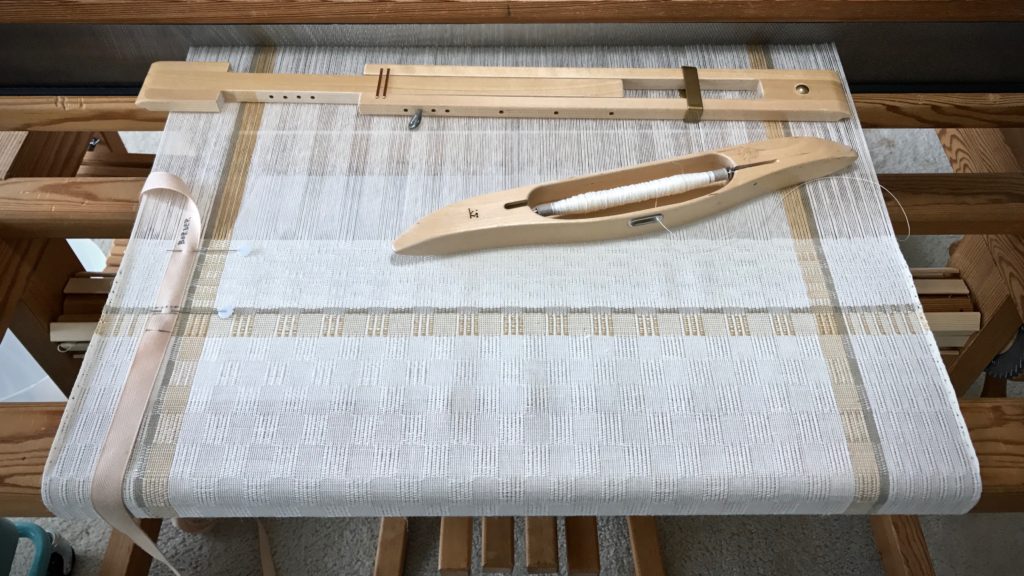
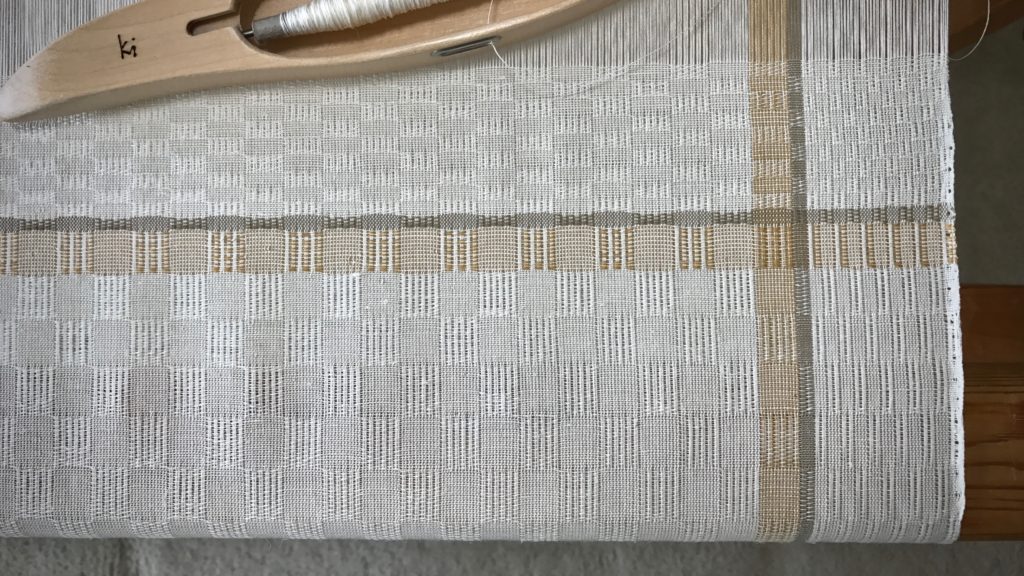
Step-by-step learning has some common ground with finding a good path for life. Walking the right path is like walking in the early morning. The dim light of dawn gradually increases and the pathway becomes more and more clear as the sun rises to the full light of day. Our Creator gave us a lighted path. The learning experiences from our experiments and explorations in life help us discover the path of the Lord, where the light beckons us. Walk in the light. It’s where we can see the next good step.
Happy weaving,
Karen

